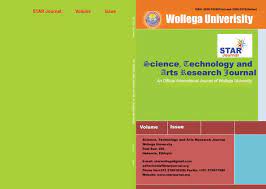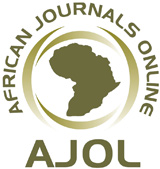Community-Based Rehabilitation on Health and Education Services to Improve Quality of Life for Children with Intellectual Disability in Adama City, Ethiopia
DOI:
https://doi.org/10.20372/star.V14.i2.12Keywords:
Community, Education, Health, Intellectual, Participation, RehabilitationAbstract
Children with intellectual disabilities deserve social inclusion, health care services, and access to education through community-based rehabilitation. Community-based rehabilitation is among the models of service provision to children with intellectual disability. In countries where there are few psychiatric hospitals and specialized treatments, community-based rehabilitation gives hope to individuals with intellectual disabilities by empowering them and improving their quality of life. The purpose of this study was to describe the functions of community-based rehabilitation on health and education services for children with intellectual disability in Adama City, Ethiopia. To this end, a community-based participatory research design was employed. Eighty-two (82) participants were selected through purposive, availability, and snowball sampling techniques. Data collection tools were observation and questionnaire. Findings reveal that parental lack of education (29.29%) and absence of training at home (20.72%) were major problems for children with intellectual disability. Findings also show that community-based rehabilitation programs significantly improved health and education services to children with intellectual disability by increasing awareness of families, facilitating emotional support, and empowering them in their schooling process. The study recommends that effective multidisciplinary strategies of community-based rehabilitation programs should be designed to integrate children with intellectual disabilities into general service provision.
Downloads
Metrics
References
American Association on Intellectual and Developmental Disabilities (AAIDD). Frequently asked questions on intellectual disability. https://aaidd.org/intellectual-disability/definition/faqs-on-intellectualdisabil i ty#.
American Psychiatric Association APA. (2013). Diagnostic and statistical manual of mental disorders-five (5th ed.). Arlington, VA: American Psychiatric Association. https://www.mredscircleoftrust.com/storage/app/media/DSM%205%20TR.pdf.
Ayalew, A. T., Adane, D. T., Obolla, S. S., Ludago, T. B., Sona, B. D., & Biewer, G. (2020). From community-based rehabilitation (CBR) services to inclusive development. A study on practice, challenges, and future prospects of CBR in Gedeo Zone (Southern Ethiopia). In Frontiers in Education. (Vol. 5, p. 506050). https://doi.org/10.3389/feduc.2020.506050.
Belone, L., Lucero, J. E., Duran, B., Tafoya, G., Baker, E. A., Chan, D., Chang C., Greene-Moton E., Kelley M.A. & Wallerstein, N. (2016). Community-based participatory research conceptual model: Community partner consultation and face validity. Qualitative health research, 26(1), 117-135. 10.1177/1049732314557084.
Carey, S. C. (2015). The capacity contract: Intellectual disability and the question of citizenship. Disability Studies Quarterly, 35(4). https://doi.org/10.18061/.v35i4.4996.
Carulla, L. S., Reed, G. M., Vaez-Azizi, L. M., Cooper, S. A., Leal, R. M., Bertelli, M., ... & Saxena, S. (2011). Intellectual developmental disorders: towards a new name, definition and framework for “mental retardation/intellectual disability” in ICD-11. World Psychiatry, 10(3), 175. https://doi.org/10.1002/j.2051-5545.2011.tb00045.x
Chandler, T. L. (2015). School principal attitudes toward the inclusion of students with disability (Doctoral dissertation, Walden University). https://scholarworks.waldenu. edu/dissertations/177/
Charlson, F. J., Diminic, S., Lund, C., Degenhardt, L., & Whiteford, H. A. (2014). Mental and substance use disorders in sub-Saharan Africa: predictions of epidemiological changes and mental health workforce requirements for the next 40 years. PloS one, 9(10), e110208. https://doi.org/10.1371/journal.pone.0110208.
De Vries et al., (2005). Diagnostic genome profile on mental retardation. Am J Hum Genet 77:606–616. https://doi.org/10.1086/491719.
Edwards, M. J., Saunders, R. D., & Shiota, K. (2003). Effects of heat on embryos and foetuses. International journal of hyperthermia, 19(3), 295-324. https://doi.org/10.1080/0265673021000039628
Hornby, G., & Kauffman, J. M. (2024). Inclusive education, intellectual disabilities and the demise of full inclusion. Journal of Intelligence, 12(2), 20. https://doi.org/10.3390/jintelligence12020020.
Jackson, R. (2016). Politics and intellectual disability in England: An historical perspective. International Journal of Developmental Disability, 63(1), 52-58. https://doi.org/10.1080/20473869.2015.1107364.
Jansen-van Vuuren, J., Lysaght, R., Batorowicz, B., Dawud, S., & Aldersey, H. M. (2021). Family quality of life and support: perceptions of family members of children with disabilities in Ethiopia. Disabilities, 1(3), 233-256. https://doi.org/10.3390/disabilities1030018.
Jeffrey, D. S., Guillaume, L., & Grayson, F. (2024). Sustainable Development Report. The SDGs and the UN Summit of the Future. The SDG Index and Dashboards. https://dashboards.sdgindex.org/.
Karam, S. M., Riegel, M., Segal, S. L., Félix, T. M., Barros, A. J., Santos, I. S., & Black, M. (2015). Genetic causes of intellectual disability in a birth cohort: A population‐based study. American Journal of Medical Genetics Part A, 167(6), 1204-1214. https://doi.org/10.1002/ajmg.a.37011.
Katz, G., & Lazcano-Ponce, E. (2008). Intellectual disability: definition, etiological factors, classification, diagnosis, treatment and prognosis. https://doaj.org/article/5a6233f3a0fb42b8ab9ce7c1dfd74af5.
Kuruganti, K. (2005). Effects of pesticide exposure on developmental task performance in Indian children. Children, Youth and Environments; 15 (1): 83-114. https://doi.org/10.1353/cye.2005.0060.
Martelli, M. F., Zasler, N. D., & Tiernan, P. (2012). Community-based rehabilitation: Special issues. NeuroRehabilitation, 31(1), 3-18. https://doi.org/10.3233/nre-2012-0770.
McClimens, A. (2005). From vagabonds to Victorian values. In Grant, G. (2005). Learning disability: A life cycle approach to valuing people, 28-46. https://ci.nii.ac.jp/ncid/BA75454364.
McDermott, S., Durkin, M., Schupf, N., & Stein Z. (2007). The epidemiology and etiology of mental retardation. https://doi.org/10.1007/0-387-32931-5_1.
Mega Obukohwo, O., Ohwin, P. E., Rume, R. A., Temitope, O. G., Oreoluwa, O. A., & Motunrayo, A. J. (2024). Causes of Chromosome Breakage and Mis-segregation Affecting Pregnancy and Newborn Health: An Insight into Developing Reproductive Health Preventive Strategies. OBM Genetics, 8(3), 1-18.
https://doi.org/10.21926/obm.genet.2403249.
Mpofu, E., Levers, L. L., Makuwira, J., Mpofu, K., & Mamboleo, G. (2017). Community-Based Rehabilitation for Human Development in Sub-Saharan Africa. In Springer eBooks (pp. 335–345). https://doi.org/10.1007/978-1-4939-7328-6_18.
Scior, K., Hamid, A., Hastings, R., Werner, S., Belton, C., Laniyan, A., Patel, M., & Kett, M. (2020). Intellectual disability stigma and initiatives to challenge it and promote inclusion around the globe. Journal of policy and practice in intellectual disability, 17(2), 165-175. https://doi.org/10.1111/jppi.12330.
Schalock, R. L. (2010). Intellectual disability. Cross-Cultural Psychology: Contemporary Themes and Perspectives, 312. https://onlinelibrary.wiley.com/doi/abs/10.1002/9781118625392.wbecp062.
Shree, A., & Shukla, P. C. (2016). Intellectual Disability: Definition, classification, causes and characteristics. Learning Community-An International Journal of Educational and Social Development, 7(1), 9-20. https://doi.org/10.5958/2231-458x.2016.00002.6.
Stoecker, R. (2013). Research methods for community change: A project-based approach. (2nd ed.). SAGE Publications; Los Angeles, CA, USA. https://doi.org/10.4135/9781452269962.
Tremblay, MC., Martin, D.H., McComber, A.M., McGregor, A., & Macaulay, A.C. (2018). Understanding community-based participatory research through a social movement framework: a case study of the Kahnawake Schools Diabetes Prevention Project. BMC Public Health, 18, 487. https://doi.org/10.1186/s12889-018-5412-y.
Thompson, J. R., Bradley, V. J., Buntinx, W. H. E., Schalock, R. L., Shogren, K. A., Snell, M. E., Wehmeyer, M. L., Borthwick-Duffy, S., Coulter, D. L., Craig, Gomez, S. C., Lachapelle, Y., Luckasson, R. A., Reeve, A., Spreat, S., Tassé, M. J., Verdugo, M. A., & Yeager, M. H. (2009). Conceptualizing supports and the support needs of people with intellectual disability. Intellectual and Developmental Disabilities, 47(2), 135–146. https://doi.org/10.1352/1934-9556-47.2.135.
Wallerstein, N.,Duran, B.,Oetzel, J. & Minkler, M. (2017). Community-based participatory research for health. https://www.wiley.com/enus/Community+Based+Participatory+Research+for+Health:+Advancing+Social+and+Health+Equity,+3rd+Edition-p-9781119258858.
Wark, S. Hussain, R. and Edwards, H. (2013). Rural and remote area service provision for people aging with intellectual disability. Journal of Policy and Practice of People with Intellectual Disabilities, 10, 62-70. https://doi.org/10.1111/jppi.12017
Yohn, N. L., Bartolomei, M. S., & Blendy, J. A. (2015). Multigenerational and transgenerational inheritance of drug exposure: the effects of alcohol, opiates, cocaine, marijuana, and nicotine. Progress in biophysics and molecular biology, 118(1-2), 21-33. https://doi.org/10.1016/j.pbiomolbio.2015.03.002.
UNICEF. (2023). Progress on children’s well-being: Centring child rights in the 2030 agenda for every child, a sustainable future. https://data.unicef.org/resources/sdg-report-2023/
Downloads
Published
How to Cite
License
Copyright (c) 2025 Journal of Science, Technology and Arts Research

This work is licensed under a Creative Commons Attribution-NonCommercial 4.0 International License.
STAR © 2023 Copyright; All rights reserved





